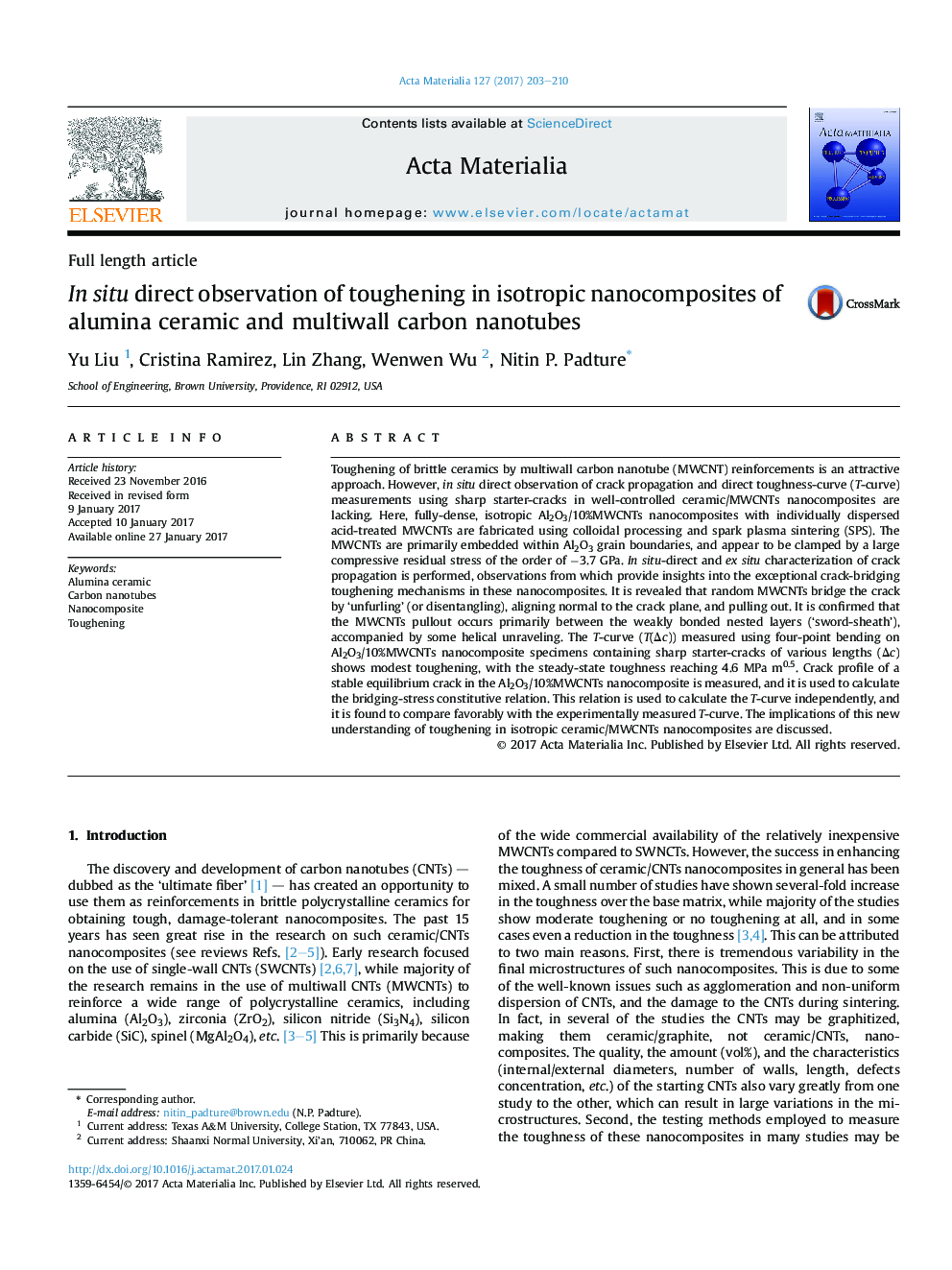| Article ID | Journal | Published Year | Pages | File Type |
|---|---|---|---|---|
| 5436324 | Acta Materialia | 2017 | 8 Pages |
Toughening of brittle ceramics by multiwall carbon nanotube (MWCNT) reinforcements is an attractive approach. However, in situ direct observation of crack propagation and direct toughness-curve (T-curve) measurements using sharp starter-cracks in well-controlled ceramic/MWCNTs nanocomposites are lacking. Here, fully-dense, isotropic Al2O3/10%MWCNTs nanocomposites with individually dispersed acid-treated MWCNTs are fabricated using colloidal processing and spark plasma sintering (SPS). The MWCNTs are primarily embedded within Al2O3 grain boundaries, and appear to be clamped by a large compressive residual stress of the order of −3.7 GPa. In situ-direct and ex situ characterization of crack propagation is performed, observations from which provide insights into the exceptional crack-bridging toughening mechanisms in these nanocomposites. It is revealed that random MWCNTs bridge the crack by ‘unfurling’ (or disentangling), aligning normal to the crack plane, and pulling out. It is confirmed that the MWCNTs pullout occurs primarily between the weakly bonded nested layers (‘sword-sheath’), accompanied by some helical unraveling. The T-curve (T(Δc)) measured using four-point bending on Al2O3/10%MWCNTs nanocomposite specimens containing sharp starter-cracks of various lengths (Δc) shows modest toughening, with the steady-state toughness reaching 4.6 MPa m0.5. Crack profile of a stable equilibrium crack in the Al2O3/10%MWCNTs nanocomposite is measured, and it is used to calculate the bridging-stress constitutive relation. This relation is used to calculate the T-curve independently, and it is found to compare favorably with the experimentally measured T-curve. The implications of this new understanding of toughening in isotropic ceramic/MWCNTs nanocomposites are discussed.
Graphical abstractFigure optionsDownload full-size imageDownload high-quality image (106 K)Download as PowerPoint slide
